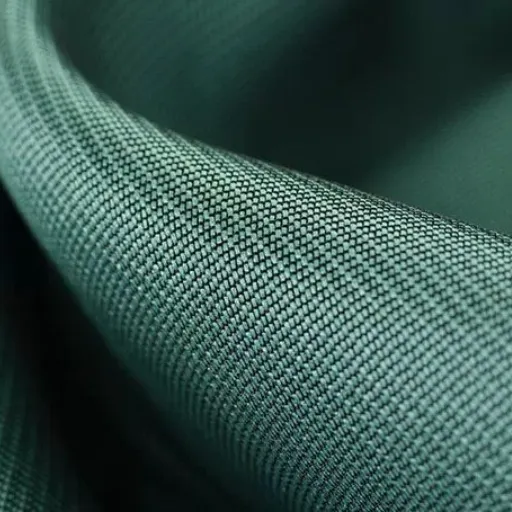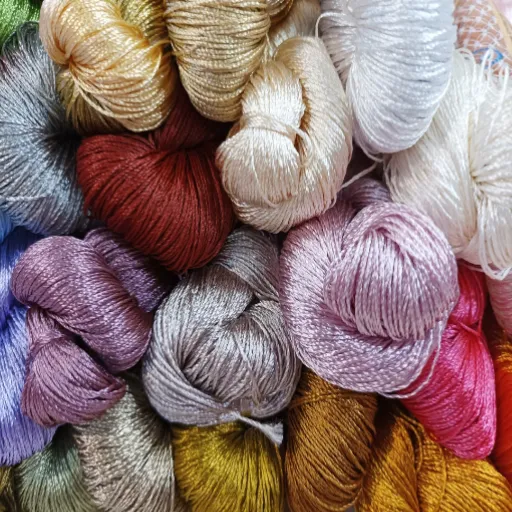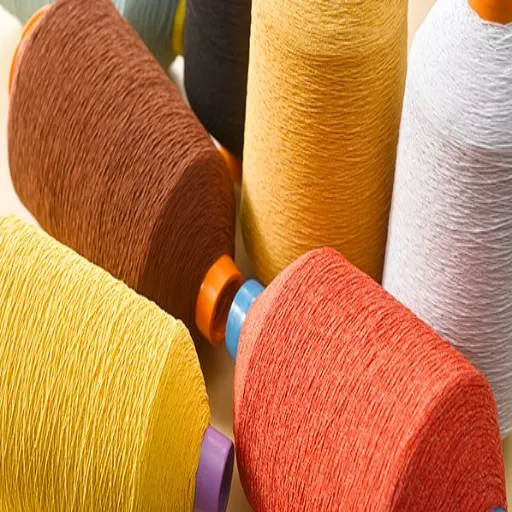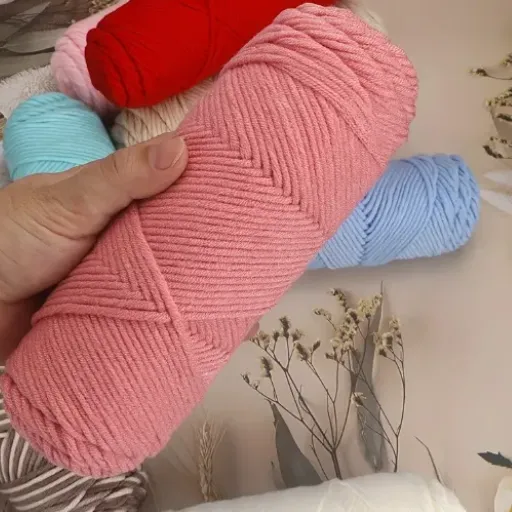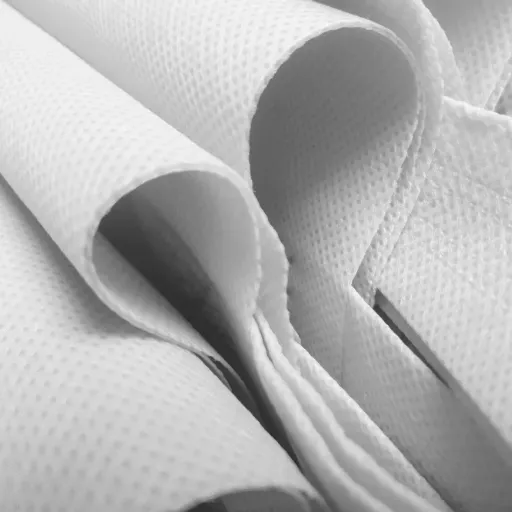The textile industry is experiencing a radical change that is mainly due to the need for extraordinary durable, versatile, and performing materials in both ordinary and specialized areas. The production of high-quality polyester fabrics, fibers, and meshes has opened new horizons in the textile world. Floor covers that are advanced sportswear, outdoor, and even medical and industrial applications are using these materials as their great source of design and functionality. This article is to find out the future of fabric innovations through polyester-based textiles by shedding light on their special characteristics, the recent breakthroughs, and the wide range of applications. Be prepared to learn how this new and amazing material is affecting industries and uplifting our lives day by day.
Understanding High-Performance Polyester

What is High-Strength Polyester?
High-strength polyester is a type of polyester fiber which is synthetic but designed mainly for the purpose of offering durability, flexibility, and resistance in the application areas far beyond the standard polyester. This fiber is made through a series of chemical and physical changes along with the use of different types of raw materials that are in traditional polyester where the resultant is a fiber that has a higher tensile strength making it capable of enduring and not breaking or deforming the heavy load and extreme conditions. This is one of the reasons that high-strength polyester is widely used in various industries demanding applications.
High-strength polyester, one of the characteristics it has is the extraordinary resistance of it to abrasion and stretching, which leads to the performance that lasts even in the most extreme environments. It also shows great strength in being resistant to harsh environmental factors like UV radiation, moisture, and chemicals, thus, providing a safe choice for outdoor and industrial applications. However, high-strength polyester is tough but at the same time lightweight, thus, it is versatile and easy to use in different situations.
The applications of high-strength polyester are many and varied. It is one of the materials that are most commonly used in industries like construction, transportation, and sports, where strong and durable materials are a must. Heavy-duty ropes, seat belts, and performance fabrics for outdoor and sportswear are some of the examples. The unique combination of strength, flexibility, and resistance will guarantee its continued indispensable role in the area of modern fabric innovation and industrial development.
Key Properties of High-Performance Polyester Fabrics
High-performance polyester fabrics have become the mainstay of modern materials due to the coexistence of their outstanding features of durability, versatility, and practicality. Below are the crucial properties responsible for these textiles being the great preference in several sectors:
1. Unmatched Strength and Longevity
Polyester is the strongest of the synthetics. Its tensile strength and toughness are such that it can resist heavy wear. Recent research has shown that polyester fibers can take up to 7.9 grams of force per denier before going bust making this synthetic fiber one of the strongest available which is less than the commonest ones. Its durable trait guarantees a long life even in the most challenging situations, thus its convenient for industrial and outerwear uses.
2. Water Repellent
Convenient of the major characteristics of polyester is that it is water-repellent which means it does not get wet easily. This property is very effective in sports and outdoor clothing since keeping dry and comfortable is the main issue. The latest polyester fabric is treated with chemicals to further increase the impermeability to water, achieving the water resistance level of over 10,000mm in hydrostatic testing which is extremely high.
3. Featherweight and Airy
Although polyester is strong, its weight is very little. Technologies like micro-denier and nano-fiber have led to the refinements in polyester fabrics whereby they have become even more breathable than before without losing their strength. This is the reason behind their use in activewear since they work perfectly in keeping the body and mind cool and comfortable.
4. Resistance to Wrinkle and Shrink
Due to its natural properties, polyester is resistant to wrinkling and shrinking which means it keeps its shape and looks good for a longer time than cotton or silk which are also natural fibers. This is one of the reasons why polyester is one of the most preferred materials in making clothes, upholstery, and home textiles because it does not require frequent washing.
5. Heat Regulation
It is possible to create sophisticated polyester blends that can give off great insulation in cold regions or heat dispersed in hotter places. Reports say that thermal-regulating polyester can actually make the wearers feel more comfortable by changing its heat-conducting property according to the outside temperature.
6. Recycling and Sustainability
Recycling is the main focus of modern polyester fabric manufacture. Recycled polyester, which is usually made from discarded plastic bottles, has a lower impact on the environment. For instance, approximately 10 bottles of plastic can make fibers for one standard T-shirt from polyester recycling. The industry has been committed to adopting eco-friendly practices, which shows the material’s advancing role in the area of eco-friendly manufacturing.
The application of these major properties enables a wide range of industries from styling to aviation to keep on finding new uses of polyester fabrics thus the versatility and timelessness of the material are justified in the rapidly transforming world.
Comparison of Polyester vs. Other Fabrics
By its durability and resistance to abrasion, polyester is recognized as a synthetic fabric that is very different from natural ones like cotton and wool. Cotton is easy to dye, and it’s also prone to shrinking and wrinkling, while polyester keeps its shape and needs no ironing, thus being the most convenient choice for daily wear. What is more, polyester is less absorbent, which means it dries faster; thus, it is very much in demand for sportswear or outdoor activities where the quick-drying feature is a must.
Polyester is often a more cost-effective option than nylon, the main rival in synthetic fabrics, and it also has better resistance to fading due to sunlight, thus an excellent choice for outdoor settings or applications where the sun is up all the time. Nylon, however, is known for its superior stretchiness and abrasion resistance which makes it ideal for demanding applications like outdoor gear or tights.
Sustainability is another major point of differentiation. With the development of recycling technologies, polyester is becoming more recyclable and thus can contribute to “fabrics from recycled plastics” production. On the other hand, cotton and wool are natural fibers and are therefore biodegradable, which makes them eco-friendly for disposal. Eventually, if the lifespan of polyester is considered, its environmental impact may balance out in the long run; still, the decision will be influenced by the usage and sustainability specifications.
Applications of High-Performance Polyester
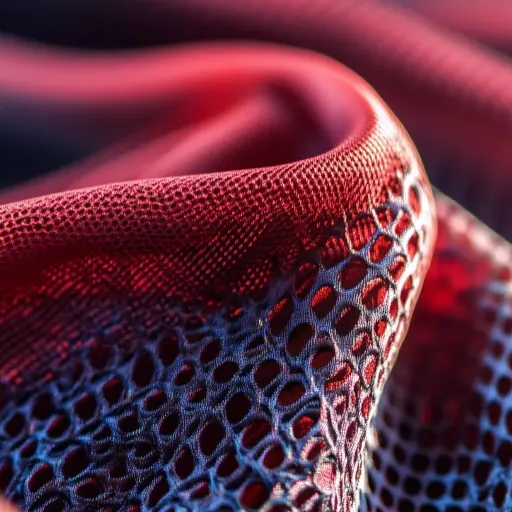
Industrial Applications of Polyester Fabrics
Polyester fabrics were the most commonly used among the various industrial applications due to their characteristics such as strength, durability, and resistance to moisture and UV light. The main industrial applications of polyester include the use of conveyor belts, safety harnesses, and sewing threads, among others, which are the factors that make the fabric highly suitable even for the toughest applications. Also, it is the property of polyester to keep its shape under extreme stress that makes it a very reliable material for use in heavy-duty industries.
One more important area in which polyester is used is in filtration systems. Apart from water, air, and chemical industrial filters, the use of polyester fabrics is also common in the manufacture of non-corrosive and high-temperature tolerant materials. As a result, they become the major players in the filtration systems of the industrial plants, power plants, and wastewater treatment facilities, thus promoting the environment around them to be cleaner and safer.
In addition, polyester is a critical element in the making of geotextiles, which are primarily used in the construction and civil engineering markets. These geotextiles can be used to enhance the soil, stop erosion and make a project like road or wall or landfill construction stable. The durability of polyester ensures that it is the material of choice in the industrial and infrastructural sectors, as it can adapt to meet the most varied and technically demanding requirements.
Outdoor Gear and High-Performance Textiles
The production of outdoor gear and high-performance textiles relies heavily on polyester and synthetic materials, which together provide a triad of durability, versatility, and resistance to weather. Such materials are specially made to survive tough outdoor conditions, thus they become the right choice for tents, backpacks, and protective clothing. Their characteristic of being strong yet lightweight makes it possible to use them comfortably without any performance forsaking.
Moreover, high-performance textiles are equipped with such features as moisture-wicking, UV resistance, and thermal insulation. These features are very much needed for people that are engaged in outdoor activities, sports, and professionals who depend on their gear for comfort and protection in different weather conditions. To illustrate, moisture-wicking fabrics draw perspiration away from the body during vigorous activities, whereas UV protection prevents the user from harmful sun exposure, thus letting the user concentrate on the activity with assurance.
Besides, there has been a breakthrough in the field of textile technology that has made it possible to combine sustainability with outdoor gear. The recycling of materials like post-consumer polyester is gradually becoming the common practice in the industry to minimize environmental impact. This change not only fosters a greener industry but also ensures that the performance criteria for outdoor and performance applications are still met. Textiles’ participation in the process of providing the functions of modernity plus the reliability and sustainability, has been significantly advanced by these innovations.
3D Printing with High-Strength Polyester Fiber
3D printing with high-strength polyester fiber has opened new avenues in manufacturing, particularly in industries requiring durable, lightweight materials. Polyester fibers bring excellent mechanical properties, such as high tensile strength and resistance to stretching or shrinking, making them suitable for structural and functional components. These fibers also offer environmental advantages when derived from recycled materials, aligning with sustainable manufacturing practices.
The process of using polyester fiber in 3D printing typically involves blending it into filament material compatible with additive manufacturing technologies. This enables the creation of complex, intricate designs that are difficult to achieve using traditional production methods. High-strength polyester fibers enhance the functionality of printed items by increasing durability and resistance to environmental conditions, such as moisture and temperature changes.
Furthermore, incorporating polyester fibers into 3D printing supports diverse applications, including automotive parts, medical devices, and consumer goods. The ability to produce custom designs with a balance between strength and flexibility ensures the material meets the demands of various sectors. Continued research and development in this area are expanding the range of applications and fostering the integration of recycled polyester fibers for a more sustainable future.
Durability and Strength of Polyester Fabrics
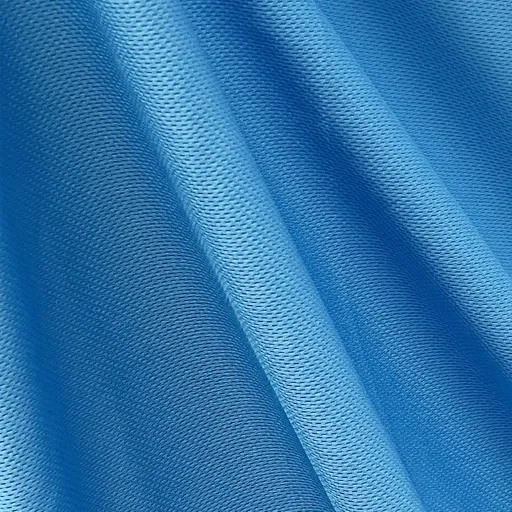
Testing the Tenacity of High-Strength Polyester
Standardized tensile strength tests are a measure of the durability of high-strength polyester fabrics under extreme conditions. Tests of this nature mainly determine the amount of force that will rupture the fabric when it is being pulled in a controlled manner. The most frequently employed test method is the strip or grab tensile strength test, which yields accurate information about the material’s resistance to tension as well as its elongation capacity. The data acquired permits the supplier to determine if the fabric is safe for use and if it meets the performance standard for various industrial or consumer applications.
The durability of polyester originates from its molecular structure which is very difficult to stretch, tear or wear out. The majority of high-strength polyesters can take the strain of mechanical stress repeatedly without deteriorating too much, thus being very suitable for the application of reliability in the long run, for example, safety gear, industrial ropes, and heavy-duty fabrics. The manufacturers are able to guarantee that these materials are capable of withstanding high-performance environments by applying rigorous tests to them.
Moreover, testing of high-strength polyester fabrics involves not only the simulation of environmental factors like humidity, temperature, and UV exposure but also the determination of their effect on the fabric’s strength over time. To the extent that they are exposed to such conditions, high-strength polyester fabrics demonstrate exceptionally good resilience and thus are further recognized for their versatility and long-term reliability. Mechanical and environmental testing combined yield a thorough polyester tenacity assessment, and thus industries can confidently exploit the material in harsh conditions.
Factors Affecting the Durability of Polyester Fabrics
A number of factors like mechanical stress, environmental exposure, and the manufacturing process determine the durability of polyester fabrics. It is necessary for the industries that require high-performance materials to understand these factors as they are the materials that can last and still work under harsh conditions for a long time.
| Factor | Impact on Durability |
|---|---|
| UV Exposure | Polyester fabrics are not totally immune to UV light attack, however, and even in the case of textiles with relatively high UV resistance, prolonged exposure will eventually weaken the material. Unprotected polyester that is exposed to direct sunlight for 1,000 hours will approximately lose 50% of its tensile strength according to scientific studies. But the use of UV-stabilizing coatings and additives as part of the manufacturing process will lessen this effect; thus, the fabric will have a longer life in outdoor applications. |
| Temperature Fluctuations | Polyester is a heat-resistant material that has very good thermal stability since its melting point is about 482°F (250°C). On the other hand, extreme temperature fluctuations, especially with mechanical pressure applied, may cause deformation or micro-tearing of the fabric over time. |
| Moisture and Humidity | In spite of polyester being non-wettable and resistant to water absorption, its long-term exposure to high humidity may lead to a decrease in its elasticity and flexibility. Using sophisticated water-repellent treatments, for instance, Teflon coating, is the common practice for retaining the fabric’s performance in wet areas. |
| Chemical Exposure | Certain chemicals, such as strong alkalis and oxidizing agents, can weaken polyester fibers. Nonetheless, polyester’s resistance to acids and organic solvents makes it a good candidate for providing many industrial applications, but nevertheless, it is recommended to limit accidental exposure to harmful chemicals to keep the fabric’s integrity. |
| Abrasion Resistance | Natural abrasion resistance of polyester is one of the contributing factors to its durability. The reports say that polyester fabrics, which are often subjected to heavy mechanical stress, for instance, rubbing in industrial environments fail to lose their integrity in comparison to some natural fibers. Nevertheless, the incorporation of particular reinforcements can even further enhance their endurance. |
When these factors are all considered and the appropriate treatment and reinforcements are applied, polyester fabrics can be used in a variety of demanding applications optimized for performance and longevity.
Real-World Examples of Polyester in Harsh Environments
The use of polyester fabrics in extreme environments is very common because of their durability and versatility. One typical use case is the outdoor camping gear, including tents, and hiking equipment. The resistance of polyester to UV rays and humidity assures that the materials will not lose their strength even when heavy rains or intense sunlight are the weather situations for a long time.
It is also noteworthy that polyester is frequently used in industrial applications such as conveyor belts and covers. The factories or agricultural environments that use the polyester-based solutions subject their materials to high levels of abrasion, heat, and stress. The quality of the fibers’ strength and temperature tolerance allows the polyester products to withstand the extreme conditions of the industry without wearing out quickly.
Moreover, polyester fabrics play a crucial role in the manufacture of geotextiles. The use of these materials is often at the construction sites, where the projects are like road stabilization, retaining walls, and erosion control. Because polyester is chemically stable, it can be relied upon to last that long, even when it is exposed to soil and water and other degrading elements, thus, helping to assure the reliability of the infrastructure project and its long-term lifespan.
Customizing Polyester Solutions for Diverse Needs
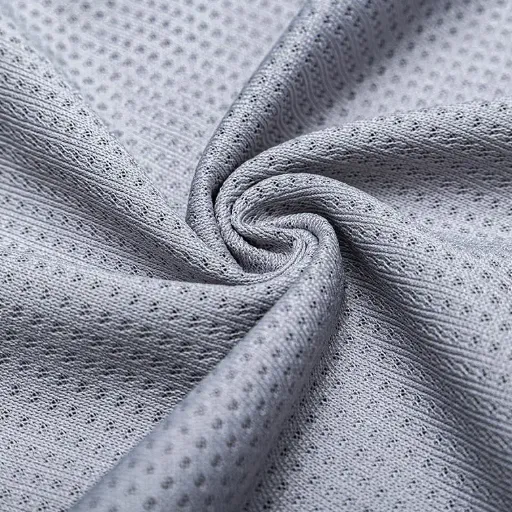
How to Customize High-Performance Polyester Fabrics
The process of customizing high-performance polyester fabrics entails changing their properties to fit the specific needs of various applications. The initial step in doing that is selecting the right polymer. The manufacturers can change the molecular structure of polyester and thus, improve features like tensile strength, flexibility, or the ability of the fabric to withstand scorching sun and a moist environment. The fabric made with these changes is more suitable for use in rough conditions.
The choice of the method of fabrication is another factor that accounts for the customization. The use of weaving, knitting, or non-woven production can lead to very different fabric textures, durability, and functionality which are important for the final product. The fabric can be made suitable for different industries like construction, healthcare, and outdoor equipment by adding coatings or treatments such as flame retardants, water repellents, or antimicrobial agents. The application of a treatment is determined by the intended use of the fabric, thus ensuring it meets the established performance standard for the specific application.
Finally, the introduction of cutting-edge technology can make high-performance polyester fabrics even more capable. One of the ways to conductive fibers for smart textiles embedding or eco-friendly dyes usage to support sustainability initiatives. is the reason for the increasing popularity of such methods. By combining innovations in material science with accurate manufacturing processes, polyester fabrics can become not only those that meet but also the ones that exceed the requirements of modern industries.
Collaborating with Suppliers for Tailored Solutions
To have polyester cloth applications, collaborating with suppliers is a necessity. If a business works hand in hand with suppliers, it can be certain that the materials are capable of the performance and quality the business specified. Suppliers render their knowledge in material properties that are very important for the companies’ selection of fabrics to suit their needs. Thus, through this partnership, it is possible to personalize even the most delicate details starting from mixing the right types of fabric and finishing with the addition of features like moisture-wicking or UV resistance.
Good communication takes the lead and serves as a foundation for collaboration to be successful. It is very important to lay down expectations very clearly, which includes performance criteria, sustainability goals, and financial limitations. Communicating with each other in the form of regular updates and feedback allows the suppliers and the companies to make changes during the development so that the final product is in complete harmony with the objectives of the project. Working closely with suppliers makes trust a natural outcome and trust is a vital factor for long-term partnerships and also for consistent product performance.
In addition to that, supplier collaborations can be a source of innovation and sustainability. Suppliers are usually the ones who know the latest technologies, e.g., environment-friendly dyeing methods or recycled polyester production, and can, therefore, help a company with its environmental commitment. Businesses that utilize this supplier knowledge not only succeed in satisfying market needs but also play a constructive role in the global sustainability movement. This strategic partnership is eventually a win-win situation for both parties and a factor that accelerates the development of the textile industry.
Case Studies: Successful Customization in Industry
Case Study 1: Tailored Solutions for Performance Enhancement
The first of the many instances of the customizing victory in the fashion sector is a gigantic sportswear maker that is working with a textile supplier to get fabrics that perform professionally. The textile supplier, who was aware of the rapidly increasing demand for breathable and moisture-absorbing materials, was offering manufacturer support in the area of fabric formation by utilizing the cutting-edge fiber technology. As a result of this close cooperation, the clothing industry was able to market successfully and thus the athletes got the comfort and performance increase offered by the garments. The action taken by the supplier in regard to the athletes’ needs was an illustration of the impact of performance-enhancing customized solutions.
Case Study 2: Sustainable Practices Driving Market Growth
Another remarkable case is the fashion house that has teamed up with its supplier to keep the demand for sustainable products that come from nature at the same level as the brand consumers are expecting. Quite a lot of the methods, i.e. natural dyeing as well as recycling, that the supplier engaged in were environmentally friendly, and the products were only made of textiles from ethical sources. The brand’s sustainability initiatives and the customer demands for green options were the cases that led to the brand’s alignment with its sustainability initiatives and customers. Eventually, the brand got its loyalty from the customers boosted and its, market share expanded, proving how the customizing process can not only satisfy the environmental responsibility but also support the major objectives of the corporate environment.
Case Study 3: Mass Customization for Consumer Appeal
Advancements in mass personalization have made customizing in the textile sector more profitable. The most prominent case is a company that produces home textiles and offers unique designs made specifically for each customer. The supplier has made it possible for the company to print and dye customer-specified patterns and colors in small lots that are practically waste-free. The customers responded to the wide range of patterns and exclusive offerings positively leading to the company becoming more involved with the customers and hence more sales. This situation has proven that the blending of creative production methods brings about both operational efficiency and customer satisfaction alike.
Future Trends in High-Performance Polyester Textiles
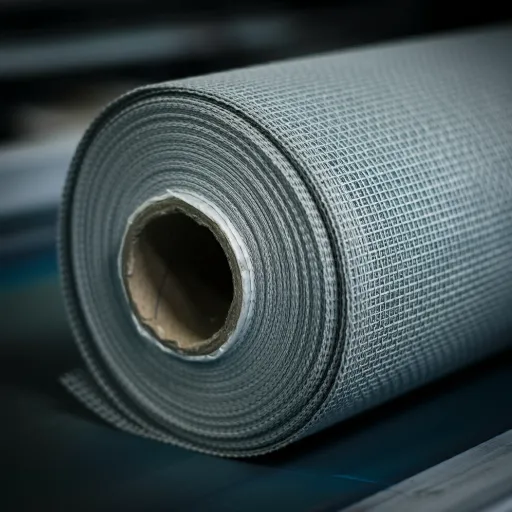
Innovations in Polyester Manufacturing Techniques
The textile industry is changing its landscape due to the innovations in polyester manufacturing that are significantly in the direction of making processes more sustainable and efficient. One of the major advancements is the incorporation of recycled materials in the manufacturing of polyester. Recycled polyester, mainly coming from plastic bottles and industrial waste, helps to break the chain of using virgin petroleum-based raw materials thus lessening the impact on the environment. This recycling not only solves the problem of waste disposal but also saves up energy that would have been used in the production process.
Bio-based polyester is the latest product of this technological evolution. Researchers and producers are looking for eco-friendly resources, like plant matter, instead of oil to create the basic ingredients of polyester. The bio-based polyester is the same as the standard one from a performance point of view, but it also provides the manufacturers with an opportunity to reduce their carbon footprint, thus promoting the usage of green production methods that are becoming popular. Such technical breakthroughs make it possible to have the textile synthesis of the future that is both up to the performance standard and environmentally conscious.
To add to it, the dyeing processes that are being developed like no-water dyeing are now benefiting the polyester manufacturing process. The introduction of these processes has totally done away with the huge water and the aggressive chemicals that were conventionally used in dyeing. This not only results in less water being polluted but also faster and cheaper production. As a whole, these reinventions reveal the sector’s animus to couple technological breakthroughs with environmental awareness and are also instrumental in determining the future of high-performance polyester textiles.
Sustainability Trends in Polyester Production
Polyester production is no longer just an industry that focuses on profit, but rather one that is at the forefront of the movement to save the earth. One of the ways the industry is doing this is by the use of recycled polyester, which is mainly made of post-consumer plastic bottles. This method not only diverts waste from landfills but also saves a lot of energy and raw materials from being utilized in the process of making new polyester, thereby establishing a circular economy in the textile manufacturing process.
To cut down on costs and promote eco-friendliness, the companies are leaning towards power and resource efficiency. The manufacturers’ spending on upgrading the equipment that will help them use less water, cut back on non-renewable energy, and even lower their carbon footprint during production is going to be a great move. An example of this would be the introduction of non-water dyeing and low-energy machines, which are both environmentally friendly and cost-effective.
More and more companies are switching over to bio-based polyester, which is made from renewable plant materials instead of fossil fuels, a trend that has been growing in recent years. This practice not only lessens the dependence on oil but also provides a more sustainable route for the manufacture of synthetic fibers. These sustainability trends, along with stricter regulations and certifications encouraging transparency, are responsible for shaping a future for the polyester industry that is both accountable and ethical in terms of performance, price, and environmental impact.
The Role of Technology in Advancing Polyester Fabrics
Technology has played a significant role in turning polyester fabrics into more versatile and user-friendly materials. One of the main processes that has contributed to this change is the advanced polymerization techniques, which allow the manufacturers to produce stronger and more durable fibers while at the same time minimizing the waste produced. Thus, the development of polyester fabrics is able to cover a wider range of industries such as fashion and automotive where performance and reliability are the key characteristics of the products made.
On the other hand, the functional polyester textiles that technology has helped to develop are another area where the impact of technology has been great. The application of treatments such as the moisture-wicking, coating by UV protection and antibacterial finish has opened up new avenues for the use of polyester in activewear and medical applications. These innovations have made the fabric more versatile to the consumer’s needs but still, it remains at an affordable price and is still accessible to a larger number of consumers.
In addition, the recycling technologies have conquered the way to great progress in cutting down the environmental footprint of polyester. The chemical recycling method which is among the efficient methods serves to recycle post-consumer plastic wastes chemically to produce high-quality polyester fibers. Thus, it not only promotes the circular economy but also overcomes the sustainability challenges without compromising the quality of the material. The technology keeps changing, but it is still the same for polyester fabrics, and that means the future of such fabrics holds great chances for innovation, durability, and eco-friendly development.
Frequently Asked Questions (FAQ)
Q: What is high-performance polyester?
A: A high-performance polyester is a synthetic fabric-type material with extraordinary strength and durability as its main characteristics. The whole point of its manufacture is to give the best performance in several different applications which it is widely used in very tough materials. This fiber is quite versatile and still has very high resistance to tear, heat, and chemicals thus enabling it to last even through the most challenging environments.
Q: How does high-performance polyester compare to traditional polyester?
A: High-performance polyester gives several advantages over traditional polyester, among which are greater strength, durability, and chemical resistance. Heavy-duty applications are the field where this material is particularly suited, where it combines high performance and reliability. The fabric/craft not only has good dimensional stability but also the permeability has been reduced hence this material can be used under demanding conditions.
Q: What industries commonly use high-performance polyester?
A: Various industries need high-performance polyester, automotive, aerospace and construction being the foremost ones. For example, composite materials’ manufacturers who are in the leading position of the industry rely on this fabric mainly for its strength and its capability not just to survive but thrive in difficult conditions. Its usage in composites as a reinforcing material is most prominent because of its resistance against chemically based oil products.
Q: What are the benefits of using high-performance polyester in composite materials?
A: Among the benefits of using high-performance polyester in composite materials the main one is the enhancement of strength and longevity. In a way, it becomes a perfect reinforcement material. Corrosion and chemical resistance of the composites due to high-performance polyester contribute to their integrity over time. Not to mention, high-performance polyester provides excellent dimensional stability and tear resistance very essential for structural applications.
Q: Can high-performance polyester be used in outdoor applications?
A: Absolutely, high-performance polyester is very appropriate for outdoor applications because of its heat resistance quality as well as durability. It will be able to stand up to the different weather conditions and also it will be resistant to UV degradation, thus it becomes an outdoor fabric and covering of choice. Moreover, its brilliant characteristic of surviving all such changing factors contributes to maintaining the overall functionality and good looks of the fabric in the long run.
Q: What are the properties of high-performance polyester yarn?
A: High-performance polyester yarn supplements many good properties like strong, super tear resistance and great chemical resistance. The diameter of the yarn can be varied according to different applications which gives it a range of uses. Besides, the capability of withstanding the severe conditions makes this type of yarn the preferred one in industries where the textile solutions need to be nothing but reliable.
Q: How is high-performance polyester manufactured?
A: Manufacturing of high-performance polyester is done through cutting-edge technology and high-quality resin formulations. Besides, the process affirms that the end product is embodied with the desired properties such as strength, durability, and resistance to hostile environments. The mixture of excellent materials with the exact engineering results in high-performance fibers that not only meet but also sometimes exceed the industry standards.
Q: Where can I buy high-performance polyester?
A: High-performance polyester could be obtained from a variety of industrial textile suppliers and wholesalers who are concentrating on this area. Many producers promote buying in bulk for companies which is good for them and they would get the material at a less competitive price. It is better to go for those suppliers whose products are always of the best quality and have also been reliable suppliers of high-performance polyester.
Q: What factors should be considered when selecting high-performance polyester?
A: In selecting high-performance polyester, it is important to take into account such factors as the specific application, the strength and durability required, and the environmental conditions that the material will be subjected to. The material’s resistance to chemicals, heat, and tearing should be evaluated in relation to your demands. Furthermore, the fabric’s thickness and construction could also play a part in its performance in different applications.
References
- Top Polyester Manufacturer: Solutions for Diverse Fabric Applications – A resource on specialized polyester types, including high-performance variants for athletic and protective uses.
- Polyester Material: Properties & Uses – An overview of unsaturated polyester resins used in high-performance building materials and transportation infrastructure.
- What is High Performance Polyester? Uses, How It Works – A detailed explanation of high-performance polyester applications in industries like automotive, aerospace, and textiles.
- Polyester: A Variety of Formulations for Specific Applications – Insights into polyester resin applications across marine, industrial, and construction sectors.
- Closing the Loop in Polyester Textiles – A discussion on the challenges and innovations in polyester use and recycling within the textile industry.









